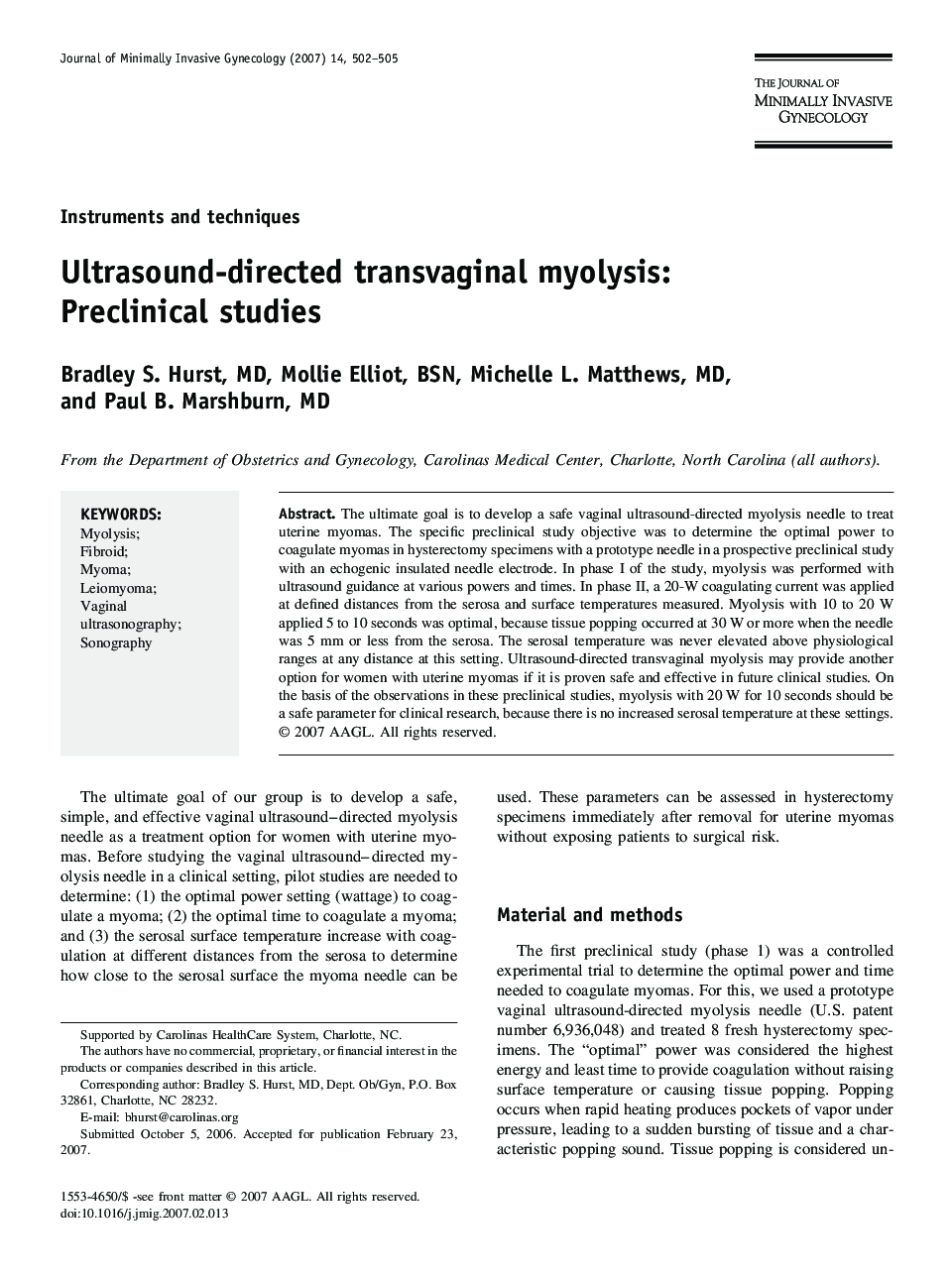| Article ID | Journal | Published Year | Pages | File Type |
|---|---|---|---|---|
| 3957600 | Journal of Minimally Invasive Gynecology | 2007 | 4 Pages |
Abstract
The ultimate goal is to develop a safe vaginal ultrasound-directed myolysis needle to treat uterine myomas. The specific preclinical study objective was to determine the optimal power to coagulate myomas in hysterectomy specimens with a prototype needle in a prospective preclinical study with an echogenic insulated needle electrode. In phase I of the study, myolysis was performed with ultrasound guidance at various powers and times. In phase II, a 20-W coagulating current was applied at defined distances from the serosa and surface temperatures measured. Myolysis with 10 to 20 W applied 5 to 10 seconds was optimal, because tissue popping occurred at 30 W or more when the needle was 5 mm or less from the serosa. The serosal temperature was never elevated above physiological ranges at any distance at this setting. Ultrasound-directed transvaginal myolysis may provide another option for women with uterine myomas if it is proven safe and effective in future clinical studies. On the basis of the observations in these preclinical studies, myolysis with 20 W for 10 seconds should be a safe parameter for clinical research, because there is no increased serosal temperature at these settings.
Related Topics
Health Sciences
Medicine and Dentistry
Obstetrics, Gynecology and Women's Health
Authors
Bradley S. MD, Mollie BSN, Michelle L. MD, Paul B. MD,
